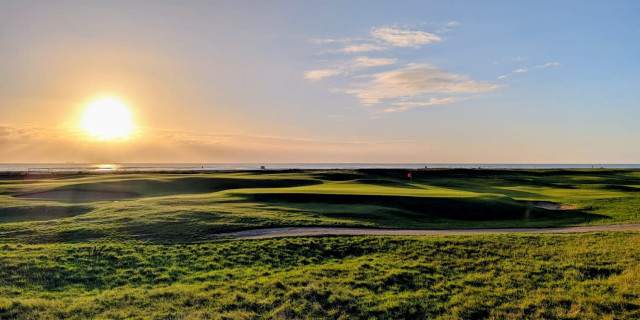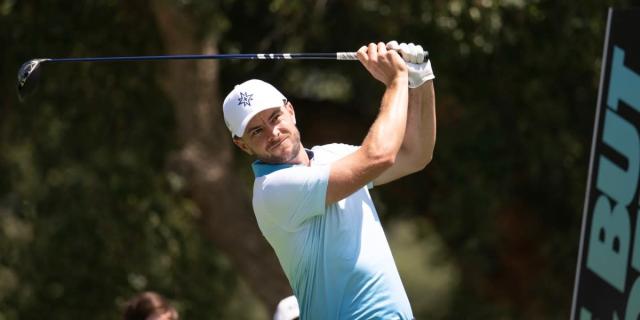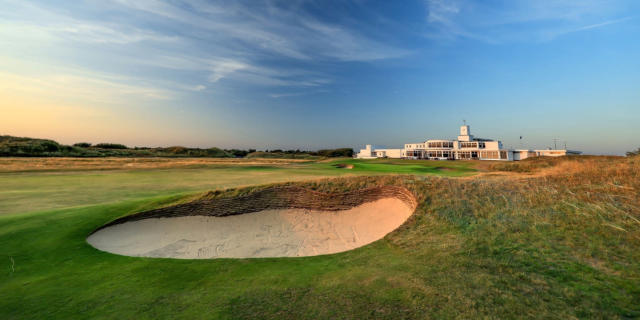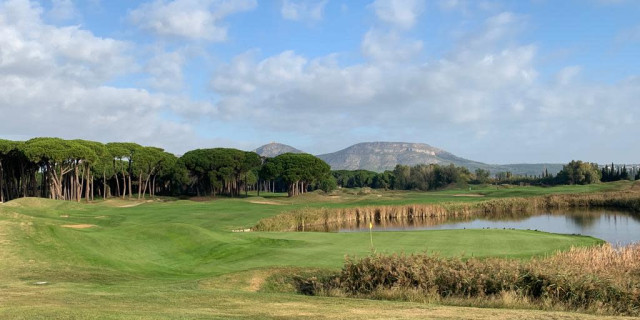
The Two Contests That Changed the Ryder Cup Forever
IT IS the most eagerly anticipated event in the golfing calendar, when the 12 best players from Europe take on the 12 finest from the United States of America with a little gold trophy called the Ryder Cup at stake. And it is a measure of the standing of the event that it attracts a massive global audience, with huge television figures in countries such as Australia, Japan and China, even though no golfers from that part of the world take part.
The 2018 edition takes place at Le Golf National, near Paris, from September 28-30. It is the first time it has been staged in France and interest is at fever pitch as Thomas Bjorn’s European team attempt to wrest back the trophy from the USA. Le Golf National is the perfect venue - a course that features plenty of thick rough and a lot of water. Drama is guaranteed. We will no doubt see members of the European team encouraging the home fans to make as much noise as possible, just as we are likely to see the likes of Bubba Watson and Patrick Reed conducting the army of US supporters, trying to work them up into a frenzy.
Players and fans on both sides will probably go close to crossing the line but they will stop short of the sort of gamesmanship that once threatened to ruin the contest. There are two Ryder Cup matches that took the event to the very edge of infamy and very nearly brought players to blows - Kiawah Island in 1991 and Brookline in 1999. Both were the scenes of dramatic American victories, and both saw players and fans alike cross the line.
The 1991 Ryder Cup took place in the aftermath of the Gulf War and Corey Pavin and Steve Pate famously took to the course wearing camouflage hats. There was a mood of jingoism. But here’s the thing - America and Europe had fought side by side in the Gulf, determined to bring peace to the region once and for all. So why was it that the home galleries turned on the visitors with such hateful venom?
Pavin didn’t help, and nor did Paul Azinger, a man who made his dislike for European talisman Seve Ballesteros public, especially after the two men argued bitterly during a foursomes match when the Spaniard accused the Americans of changing the type of ball they had been using without informing their opponents. It was a match that was filled with bitterness and rancour. The pressure on all 24 players went beyond breaking point. Who will ever forget Mark Calcavecchia’s extraordinary collapse in the final-day singles when he was four up with four to play against Colin Montgomerie and walked off the final green having halved their match?
After losing the 15th hole with a triple bogey and the 16th with a bogey, Calcavecchia duffed a tee shot that hit the water halfway to the 17th green, and then missed a two-foot putt to give Montgomerie the hole with a five. Calcavecchia bogeyed the final hole as well, Montgomerie parred, and the Europeans got a half.
In the end it all came down to the final match between Hale Irwin and Bernhard Langer. It had been nip and tuck all the way but Langer stood over a six-foot putt on the final green knowing that if he holed it he would beat Irwin one up, the match would be tied at 14-14 and Europe would retain the trophy, having won it the three previous times it had been played.
Langer looked to have made a good putt but it broke fractionally at the end and narrowly missed the hole. Agony for Langer and his captain, Bernard Gallagher. Ecstasy for Irwin, his 11 teammates and their captain, Dave Stockton, who would later go on to defend members of his team wearing camouflage hats.
The match left a bitter aftertaste. But not as much as Brookline in 1999. Mark James’ European side took a 10-6 lead into the singles. They couldn’t possibly lose. Could they? The captain had made no use of Jarmo Sandelin, Andrew Coltart (who had been one of his picks) and Jean van de Velde (of whom he was clearly not a fan) and all three players went into the singles clearly undercooked and were all heavily beaten. As the final day unfolded it became clear that the Americans were inspired by a speech given to them by their captain, Ben Crenshaw.
As they battled their way back into the match, the American galleries turned on Colin Montgomerie, who was playing US Open champion Payne Stewart. Montgomerie’s father later said he had never witnessed scenes like it on a golf course. He was horrified at some of the insults thrown at his son and was genuinely frightened for his safety. And Stewart, a proud American and a great sportsman, was also mortified and took his own supporters to task, apologising to Monty for their outrageous behaviour. He would go on to concede the final hole and Montgomerie would win their encounter one up.
But what really infuriated James, his vice-captain Sam Torrance and the entire European team, was an incident that occurred on the 17th green. Justin Leonard was playing Jose Maria Olazabal in a pivotal singles encounter. Olazabal had been in front but then Leonard holed a 45-foot putt on the 17th green for a birdie. It prompted an invasion of the putting surface by American players led by Tom Lehman, caddies, wives and officials, who ran over to embrace Leonard. A bemused Olazabal still had a 20-foot putt for a half but, as was later pointed out, most of those who ran onto the green had stumbled across his line. The decent thing would have been for Leonard to have conceded the putt but he chose not to. Olazabal missed, Leonard won their match and America completed a famous comeback, winning 14½ to 13½.
Torrance later described the behaviour of Lehman and his teammates as disgusting.
Days before the 2001 match was due to be played at The Belfry, terrorists flew two jets into the Twin Towers in New York. With sport the last thing on anybody’s mind, the match was postponed until 2002. Europe, captained by Torrance, cruised to a comfortable victory, after he and US captain Curtis Strange had made it clear before the match began that they expected it to be played in the right way. There was to be no repeat of the events of 1991 or 1999. It marked a turning point in the Ryder Cup. Of course, home fans want to cheer their respective team to victory and of course the players want to get their hands on the trophy but at least they now show each other some respect.
The 2018 Ryder Cup will be pure theatre. There will be joy and there will be heartbreak. But at the end of it all, the players will share a drink together and look forward to meeting again in America in 2020.
About the author

Derek Clements is a seasoned sports journalist and regular Golfshake contributor, specialising in tour coverage, opinion pieces, and feature writing. With a long career in national newspapers and golf media, he has reported on the game across Europe, the United States and Australia. A passionate golfer, he has played and reviewed numerous renowned courses, with personal favourites including Pebble Beach, Kingsbarns, Aldeburgh, Old Thorns and the K Club. His love of the game informs his thoughtful commentary on both professional golf and the wider golfing community.

The Ryder Cup is unlike any other tournament in golf and the atmosphere is something that every golf fan should experience. The experts at Golfbreaks.com can help with all aspects of your Ryder Cup experience, from accommodation and ticket packages to hospitality and travel and playing some of the fantastic nearby courses.
Tags: ryder cup










